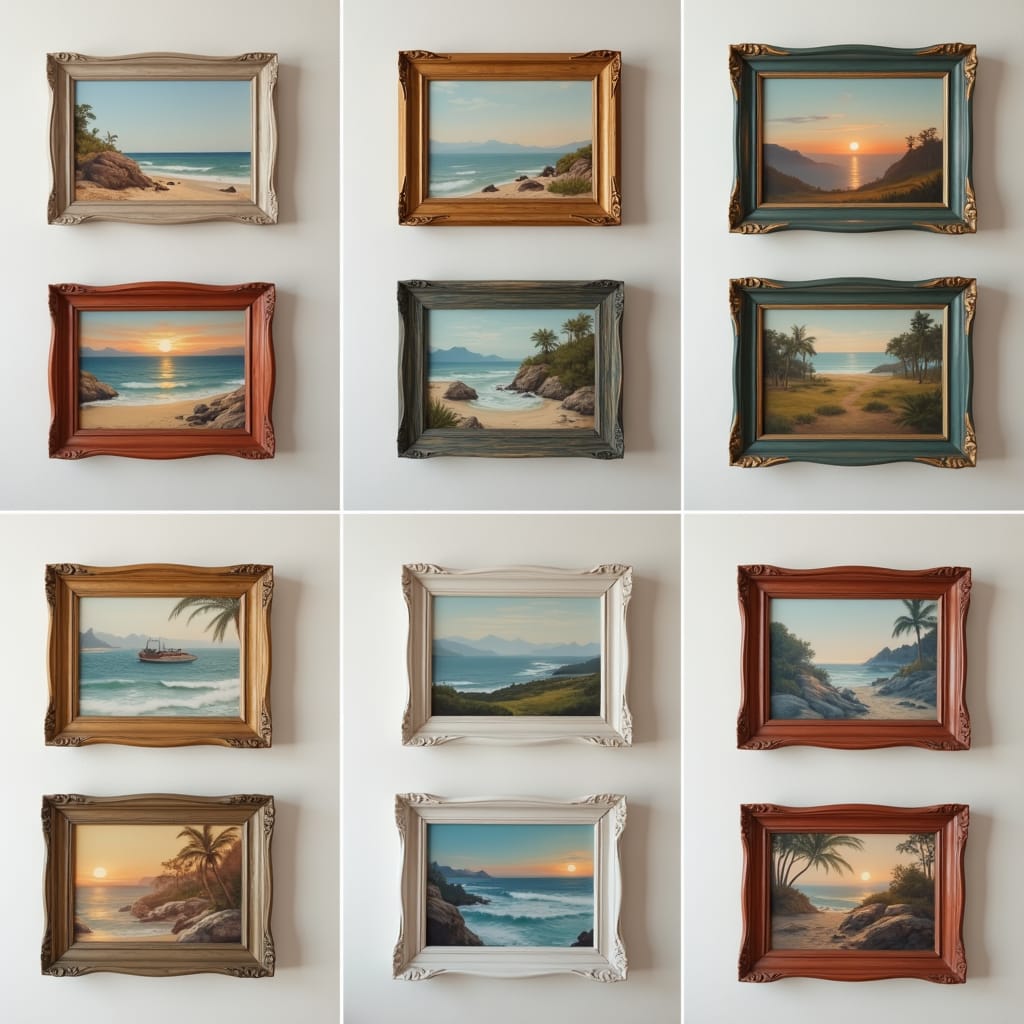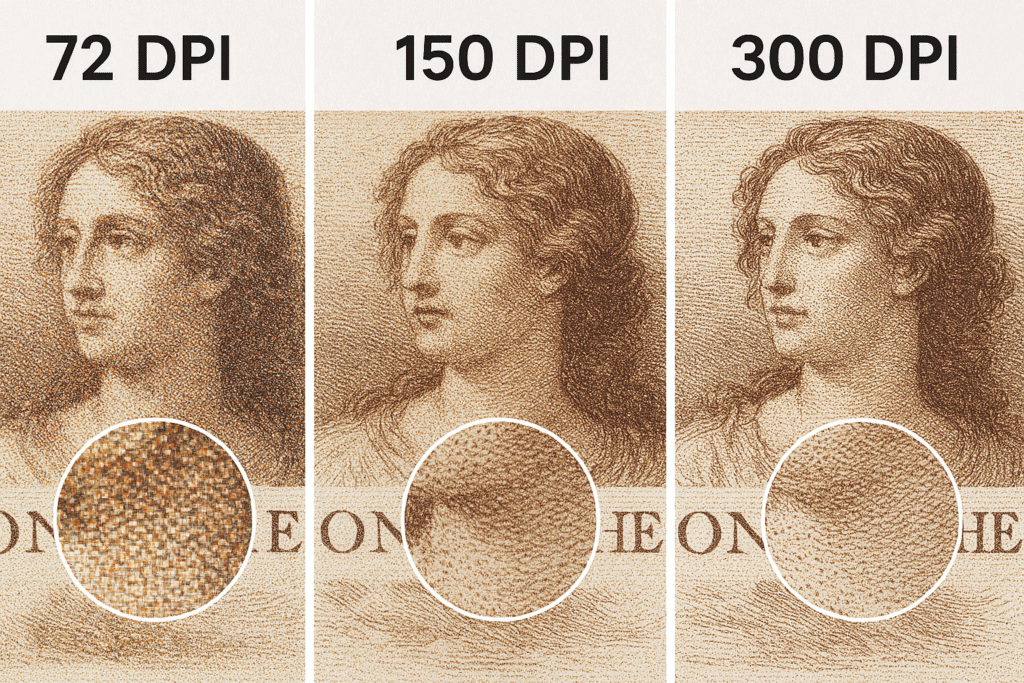Canvas art – whether a vibrant painting or a cherished print – deserves a frame that enhances its beauty and protects it for years to come. But with so many options out there, how do you pick the right one? From traditional wood frames to sleek metal designs, framing canvas art is both an art and a science. In this guide, we’ll explore everything you need to know about frames for canvas art, including types, how to choose, DIY tips, and where to buy. Let’s dive in and make your artwork shine!
Key Points Summary:
- Frames for canvas art include traditional, floater, metal, and wood options, offered by brands like GreatArt and American Frame.
- The guide covers various frame types, how to choose them, DIY tips, and where to buy.
- It’s designed to help you enhance and protect your artwork with the perfect frame.
- Frame tool to visualize your artwork
- Why Frame Your Canvas Art?
- Types of Frames for Canvas Art
- How to Choose the Right Frame for Canvas Art
- Painting Framing Studio
- DIY vs. Professional Framing: What’s Right for You?
- Maintenance and Care for Your Frames
- Where to Buy Frames for Canvas Art
- Extra Tips for Framing Success
- Frame It Right
- 🤔 FAQs: Frames for Canvas Art
Why Frame Your Canvas Art?
Framing isn’t just about aesthetics—it’s about preservation too. A good frame protects your canvas from dust, UV light, and accidental damage while elevating its visual appeal. Whether you’re framing a masterpiece or a family photo on canvas, the right choice can transform how it fits into your space. Ready to explore your options? Let’s break it down.
Types of Frames for Canvas Art
Canvas art requires frames designed to handle its thickness and structure. Here are the main types you’ll encounter, each with unique vibes and uses.
Traditional Picture Frames
Think classic elegance. Traditional frames overlap the canvas slightly (about 5mm), giving a bold, eye-catching border. They’re perfect for stretched canvases and vibrant artwork where you want the frame to pop.
- Best For: Classic paintings, strong colors.
- Features: No glass front, rear-loaded, customizable up to 1220mm x 915mm.
- Depth Tip: Match frame depth to canvas (e.g., 20mm frame for a 25mm canvas works).
Canvas Floater Frames
Modern and sleek, floater frames let your canvas “float” inside an open-box design. The entire image stays visible, making them ideal for art with edge details—like those cool painted sides.
- Best For: Contemporary art, edge-focused pieces.
- Features: Velcro tabs for easy fitting, 10mm larger than canvas for movement.
- Pro Tip: Choose a frame depth close to your canvas thickness for a snug fit.
Metal Frames for Canvas Art
Understated yet stylish, metal frames bring a minimalist edge. Often used as floaters, they’re lightweight and durable, perfect for modern or industrial spaces.

- Best For: Sleek, contemporary art.
- Features: Often back-loaded, available in finishes like matte black or silver.
- Source: Check out Metropolitan Picture Framing for options.
Wood Frames for Canvas Art
Timeless and versatile, wood frames range from rustic to refined. They suit almost any style, offering warmth and texture to your artwork.
- Best For: Everything from landscapes to portraits.
- Features: Available as traditional or floater styles, often customizable.
- Fun Fact: Wood absorbs sound, subtly enhancing room acoustics!
Here’s a quick comparison table to help you decide:
| Frame Type | Style | Best For | Key Features | Size Range |
|---|---|---|---|---|
| Traditional | Classic | Stretched canvases | Overlaps canvas, bold look | Up to 1220mm x 915mm |
| Floater | Modern | Edge-detailed art | Floating effect, full visibility | 10mm bigger than canvas |
| Metal | Minimalist | Contemporary pieces | Lightweight, sleek finish | Varies by supplier |
| Wood | Versatile | Most styles | Warm texture, customizable | Varies widely |
How to Choose the Right Frame for Canvas Art
Painting Framing Studio
Create professional frames for your paintings
Picking the perfect frame isn’t just about looks—it’s about fit and function. Here’s what to consider:
Match the Art Style

Your frame should complement the artwork. Bold abstracts might love a metal frame, while soft landscapes lean toward wood. Ask yourself: does the frame enhance or distract?
Size and Depth
Canvas thickness varies (typically 20-38mm). Measure your canvas depth and choose a frame that matches or slightly exceeds it. Too shallow? The canvas won’t fit. Too deep? It might look bulky.
- Tip: A 25mm canvas fits a 25-30mm deep frame perfectly.
Material Matters
Wood feels cozy; metal feels modern. Consider your room’s vibe—match a metal frame to a sleek loft or a wood frame to a cozy cabin.
Finish and Color
Matte black, glossy gold, or natural wood? The finish ties the frame to your decor. Dark frames add drama; light ones keep it airy.
“A frame should whisper, not shout—let the art take center stage.”
Chuck Black, Chuck Black Art
DIY vs. Professional Framing: What’s Right for You?
Framing can be a hands-on project or a pro job. Let’s weigh the options.
DIY Canvas Art Frames
Love a challenge? DIY framing saves money and adds a personal touch. Here’s a simple method from Designer Trapped:
- Measure your canvas (height, width, depth).
- Cut wood strips (e.g., 1×2 lumber) to size.
- Assemble with glue and screws, ensuring a snug fit.
- Attach the canvas with clips or velcro.
- Pros: Affordable, customizable.
- Cons: Requires tools and time.
Professional Framing
For precision and polish, go pro. Custom framers like American Frame offer tailored solutions.
- Pros: Perfect fit, high-quality materials.
- Cons: Higher cost, less DIY satisfaction.
Tip: Search how to frame a canvas painting yourself for more DIY tutorials!
Maintenance and Care for Your Frames
Once framed, keep your art looking fresh with these tips:
- Dust Regularly: Use a soft cloth or feather duster—avoid harsh chemicals.
- Avoid Moisture: Keep frames away from damp areas to prevent warping.
- Check Fit: Ensure the canvas stays secure over time.
A little care goes a long way in preserving your investment.
Where to Buy Frames for Canvas Art
Ready to shop? Here are top spots for frames for canvas art:
Online Retailers

- Amazon: Budget-friendly options galore.
- GreatArt: Wide range of styles, UK-based.
- American Frame: Custom DIY frames with pro quality.
Local Stores
Art supply shops or framing stores offer hands-on browsing. Bring your canvas for a perfect match.
Custom Framers

For unique needs, try CustomPictureFrames.com or Jackson’s Art. Contact them via American Frame’s page for bespoke advice.
Extra Tips for Framing Success
- Room Decor: Match your frame to your space—rustic for cozy, sleek for modern.
- Acid-Free Materials: Protect your art from yellowing over time.
- Test Fit: Double-check sizes before buying online.
These little tweaks make a big difference.
Frame It Right
Choosing frames for canvas art is about balancing style, protection, and practicality. Whether you go for a traditional wood frame, a modern floater, or a DIY project, the right frame turns your canvas into a showpiece. Explore options from EasyFrame or FrameDestination, and let your art tell its story. What’s your next framing project? Share below!
🤔 FAQs: Frames for Canvas Art
Here are some frequently asked questions about frames for canvas art, based on common queries:
1. What’s the difference between a traditional frame and a floater frame for canvas art?
A traditional frame 🖼️ slightly overlaps the edges of your canvas (about 5mm), creating a classic border that “contains” the artwork. It’s ideal for pieces where you want the frame to be a distinct visual element.
A floater frame 🏞️, on the other hand, makes the canvas appear to “float” within the frame, with a small gap between the canvas and the frame’s edges. This design keeps the entire artwork visible, including painted edges, making it perfect for contemporary art or pieces with intentional side detailing.
2. Do canvas frames need glass?
No, frames for canvas art typically do not include glass. Unlike paper prints or photographs that require glass for protection, stretched canvases are usually varnished, providing their own layer of protection against dust and UV light. Adding glass to a canvas can also create reflections that hinder the viewing experience and potentially trap moisture or cause mold.
3. How do I choose the right size frame for my canvas?
You’ll need to consider both the dimensions (height and width) and the depth (thickness) of your canvas.
- For traditional frames, measure the height and width of your canvas. The frame will typically be sized to match these dimensions.
- For floater frames, you’ll usually want a frame that’s about 10mm larger than your canvas’s height and width to create the floating effect and allow for easy placement.
For depth, aim to match the frame’s depth to your canvas’s thickness (e.g., a 25mm deep canvas fits perfectly in a 25-30mm deep frame). If the frame is too shallow, your canvas won’t fit; if it’s too deep, it might look awkward.
4. Can I frame a canvas myself, or should I hire a professional?
You absolutely can frame a canvas yourself 🛠️ if you’re comfortable with basic tools and some DIY. It’s a great way to save money and add a personal touch. Many online tutorials (like those found by searching “how to frame a canvas painting yourself”) can guide you.
However, for precision, high-quality materials, and a perfect finish, professional framing 🎨 is often the best choice, especially for valuable or intricate artwork. Professional framers offer tailored solutions and expertise that can significantly enhance your art’s presentation and longevity.
5. Where can I buy frames for canvas art?
You have several options for purchasing frames for canvas art:
- Online Retailers: Websites like Amazon, GreatArt, and American Frame offer a wide range of styles, materials, and price points. American Frame is particularly good for custom DIY options.
- Local Stores: Art supply shops and dedicated framing stores allow you to see frames in person and get expert advice. Bringing your canvas with you can help ensure a perfect match.
- Custom Framers: For unique needs or bespoke designs, specialized custom framers such as CustomPictureFrames.com or Jackson’s Art can create a frame tailored specifically to your artwork.



